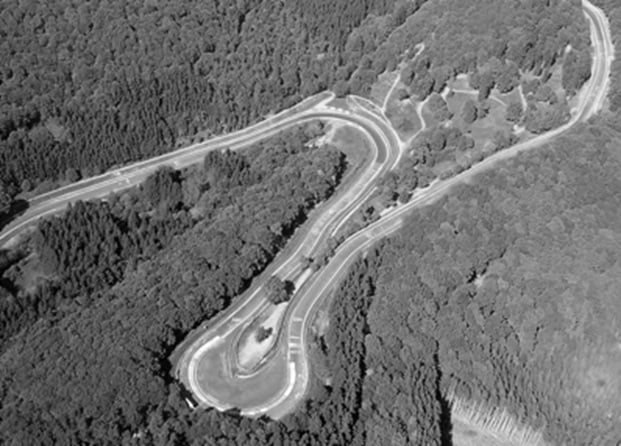In case you've happened to miss it, advances in computer graphics have elevated video gaming to a whole new level of realism in recent years. Witness iRacing and rFactor as two of many examples of the new level of "ultra-realism." If we make the assertion that games can be classified as a type of simulation, vehicle engineers might be left to wonder if the gamers are somehow winning the race, figuratively speaking. There is no need to worry.
Thanks to new LiDAR scanning technologies and sophisticated scene and surface rendering offerings from entities such as rFpro (not to be confused with rFactor), the capability already exists to realistically recreate geo-specific locations that are applicable to the engineering-class virtual test drive world – the world that is of interest to carmakers.
When injected into engineering class Driver-in-the-Loop (DIL) simulator labs, these realistic virtual environments can be as pleasing to sensors and tire models as they are easy on the (human) eye. Track surfaces and topographies are delivered as detailed engineering representations of the real thing, such that any virtual vehicle undergoing testing is benefiting from a realistic – from a fundamental physics perspective – connection to the virtual environment.
There’s something out there
These highly realistic simulations actually offer some unexpected advantages over physical prototype testing. When a vehicle development team goes to a commercially available test track, such as the well-known Nürburgring Nordschleife facility, it’s typically not an exclusive arrangement. Yes, even if one is lucky enough to be driving on a closed course during an automotive industry test day, there will very likely be a number of other vehicles on-track at the same time. Traffic. It’s unavoidable.
Test drivers must have an awareness not only of the environment and the car they’re evaluating, but of other vehicles sharing the limited track space. Building an awareness of the slower and faster objects all around, while simultaneously fiddling with data acquisition instrumentation can be, well, intimidating. Training drivers to contend with such challenges is a vital part of extracting value from a limited-time test session. DIL simulators can, of course, provide an ideal – and fundamentally safe – opportunity to “practice” such situations before jumping into the real thing, thus improving the ROI on a paid test session.
Everyone’s a hero
Another conundrum is how to put less-than-expert drivers in touch with vehicle systems in demanding test track or proving ground scenarios, e.g., How can a steering system expert, for example – rather than a hot-shoe, vehicle-dynamics level test driver – ever hope to get a feel for things? Engineering class DIL simulators address such situations directly. It is within practical bounds to expose entire development teams to test drive situations that are usually the exclusive domain of the highly qualified few. This effectively increases the pool of evaluators who can perform test drives and intelligently inform the vehicle development process.
What’s really exciting however, is that this wider group of development engineers with access to virtual testing environments, need not all converge in one place at the same time. With multiple DIL simulators in different locations sharing the same vehicle model and scenes, the pool of test drivers can now include co-development teams scattered across the globe. It can also include key supplier partners or third-party evaluators.
Different groups can share the informative experience of a virtual drive simultaneously from their home bases in multiple continents. Imagine your lead American and German driving evaluators having a go in your latest prototype vehicle on a mountain test route in Japan, and sharing their notes on the experience via a web conference – without building a single prototype, and without leaving their offices. There is no need for them to ship cars around the world, incur travel or facility rental expenses, or be jet-lagged as they drive. Thanks to engineering class DIL simulators, this technology is available right now.
DIL simulators are but a single tool in the changing automotive development landscape. To learn more about how this technology is influencing vehicle testing and development, download our FREE eBook below:


